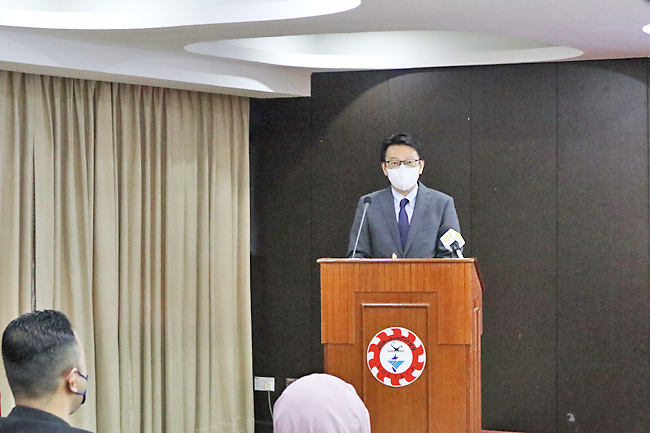Rokiah Mahmud
Education and training have shifted from face-to-face to fully digital especially with Industrial Revolution 4.0 (IR4.0) and future workplaces.
It is important for technical and vocational education and training (TVET) institutions to adapt to new teaching and learning technologies in line with the needs of the industry.
This was said by Deputy Permanent Secretary (Higher Education) at the Ministry of Education Dr Chin Wei Keh at the opening ceremony of two Southeast Asian Ministers of Education Organisation Regional Centre for Vocational and Technical Education and Training (SEAMEO Voctech) training programmes – Training of Trainers on Automotive Technology using Virtual TVET and Training of Trainers on Air-Conditioning and Refrigeration (HVAC) Technology using Virtual TVET.
He also said digitalisation has entered the workplace on a big scale and it is bringing a range of opportunities and challenges for the private sector and TVET providers.
The deputy permanent secretary said the current environment places an increasing demand on TVET instructors to keep track of changes in the industry, especially in the latest technologies required to prepare students for the demands of the new digital economy.

“Such rapid changes not only warrant an update on curricula to cover new skills and competencies but also to adjust and review the way that skills are taught and learnt.
“The biggest challenge for TVET instructors today is to keep the content of study relevant to the needs of the industry and to ensure that such content is delivered in the most engaging and effective manner such as through the use of immersive technologies, for example augmented reality (AR) and virtual reality (VR),” said Dr Chin.
“Employing such technologies in teaching and learning not only attract and engage learners but simultaneously improve the efficiency and quality of teaching.”
Dr Chin said using immersive technologies in classrooms lend itself to hands-on learning that either simulates real-world experiences or presents complex information and concepts in more engaging and interactive ways to learners.
“With the help of VR modules, TVET students get a clearer perspective of what they are learning in theory, making learning and teaching more fun and experiential for both students and instructors.
“Ideally, we hope that by embedding technology in TVET curricula we not only create a future-ready workforce skilled for the digitalised world of work but one that creates value in the workplace and enhances the competitiveness of the nation’s economy.”





